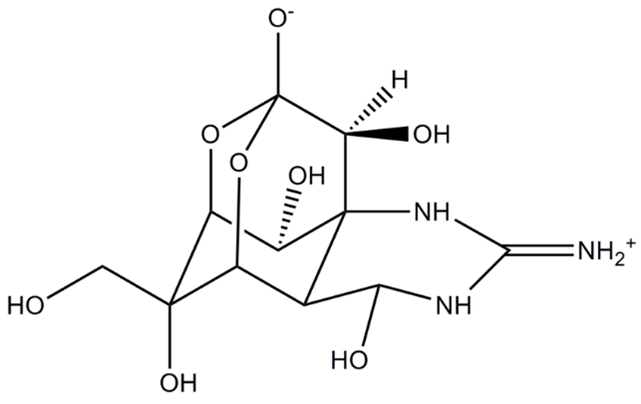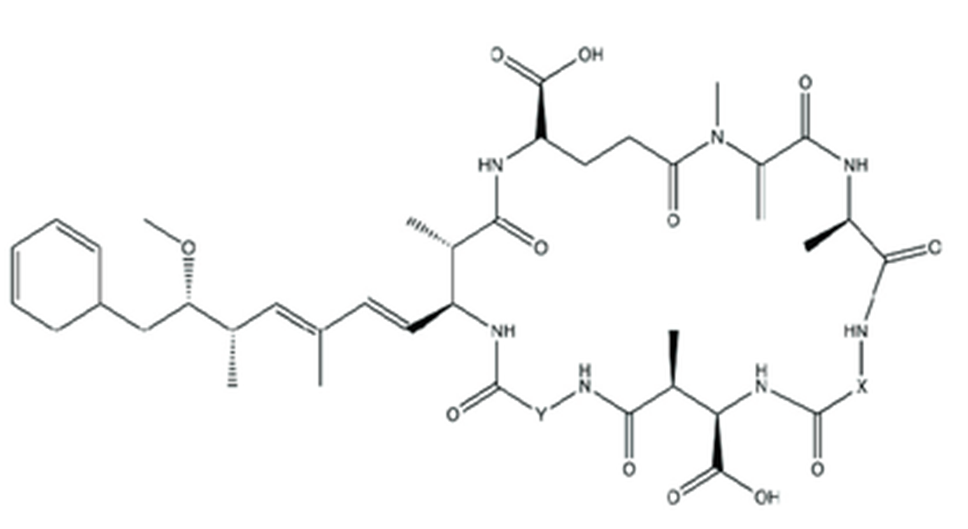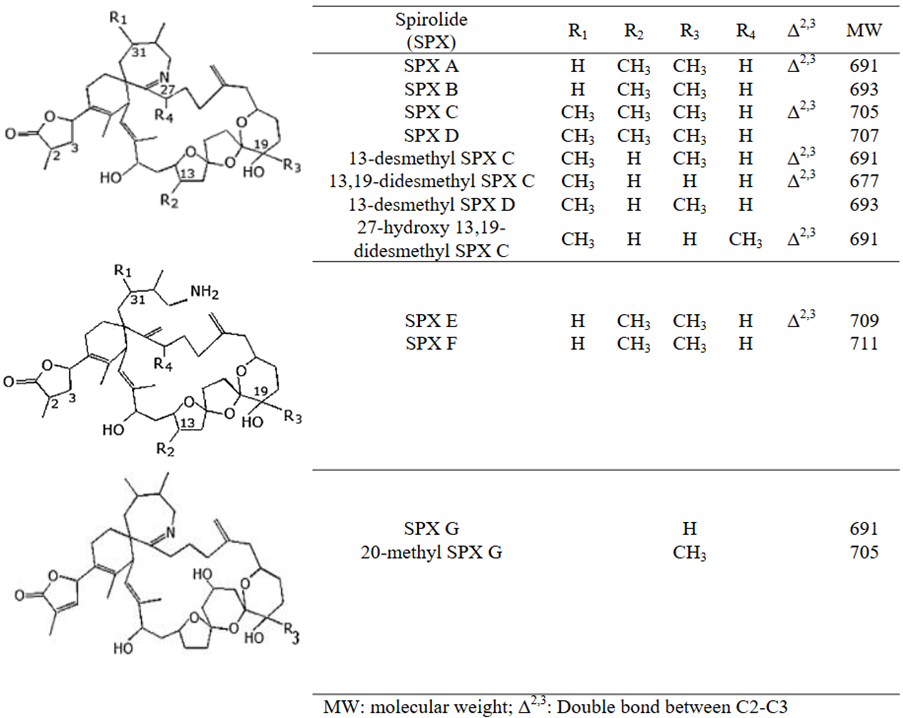Risk ranking results
In this guide
In this guideOn this page
Skip the menu of subheadings on this page.This is a paper for discussion. This does not represent the views of the Committee and should not be cited.
33. The risk rankings, following the decision tree in Figure 1, for the emerging marine biotoxins are presented in Tables 1-6. A narrative has been supplied alongside the risk ranking to clearly depict the underlying considerations as to the numerical scores applied to each biotoxin.
Table 1. Tetrodotoxin (TTX).
|
Category |
No. |
Score |
Narrative |
|
Monitoring |
4 |
Limited monitoring |
TTX is not routinely monitored; however, the French Research Institute for Exploitation of the Sea (IFREMER) conducted a five-year monitoring program of unregulated marine biotoxins between 2018 and 2022 which included TTX. |
|
Human case reports |
5 |
Documented cases of human intoxications and fatalities |
Documented cases of human intoxications and fatalities. Death, caused by respiratory failure and cardiac collapse. |
|
Toxicity |
5 |
Causes severe neurotoxic effects with low LD50 |
TTX is neurotoxic (LD50 oral administration 232 µg/kg bw and intragastric administration 532 µg/kg bw in mice). |
|
Occurrence |
5 |
Frequently detected in UK waters |
Detected at 0.0003 to 0.541 mg/kg in gastropods and bivalves in France, Spain, Italy, Greece, Netherlands, Ireland and UK. |
|
Total: |
19 |
Summary: |
For TTX all categories score high, and no specific category is driving the total score. |
Figure 1. Chemical structure of TTX (Lago et al., 2015).
Table 2. Palytoxin (PITX).
|
Category |
No. |
Score |
Narrative |
|
Monitoring |
5 |
No monitoring |
There is currently no monitoring of PITX in the UK or EU. |
|
Human case reports |
5 |
Documented cases of human intoxications and fatalities |
Documented cases of human intoxications and fatalities. Symptoms include myalgia and weakness, possibly accompanied by fever, nausea and vomiting, and rhabdomyolysis, characterised by injury to skeletal muscle, muscle breakdown and leakage of myocytes into plasma. Renal failure and disseminated intravascular coagulation. Skin, eye and respiratory irritation. Death. |
|
Toxicity |
5 |
Causes severe neurotoxic effects with low LD50 |
PITX is neurotoxic (LD50 oral administration 510-767 µg/kg bw in mice and 40 µg/kg bw in rat). |
|
Occurrence |
2 |
Detected in Northern EU waters |
Detected at 300-625 µg/kg in shellfish meat. Detected in France, Greece, Italy and Spain. |
|
Total: |
17 |
Summary: |
For PITX all categories except occurrence scored high. Only the detection of PITX in northern EU, rather than the UK, prevents the maximum score. |
Figure 2. Chemical structure of PITX (Ramos and Vasconcelos., 2010).
Table 3. Brevetoxin (BTX).
|
Category |
No. |
Score |
Narrative |
|
Monitoring |
4 |
Limited monitoring |
BTX is not routinely monitored; however, the IFREMER conducted a five-year monitoring program of unregulated marine biotoxins between 2018 and 2022 which included BTX. |
|
Human case reports |
3 |
Documented cases of human intoxications |
A few hundred intoxications reported (ANSES, 2021). Symptoms include nausea, vomiting, diarrhoea, paraesthesia, cramps, bronchoconstriction, paralysis, seizure and coma. No human fatalities or persistent symptoms reported. |
|
Toxicity |
4 |
Causes severe neurotoxic effects with relatively high LD50 |
BTX is neurotoxic (LD50 oral administration 520-6600 µg/kg bw in mice). BTX was ranked one lower than other neurotoxins (TTX, SPX, and PITX) as the LD50 range for BTX is several folds higher than other neurotoxins. |
|
Occurrence |
2 |
Detected in Northern EU waters |
Recent report of BTX-2 and BTX-3 detected in muscles in France (82 to 345 µg/kg). |
|
Total: |
13 |
Summary: |
For BTX no maximum scores for categories were given. The severe neurotoxic effects and lack of monitoring are driving the score. However, occurrence data on BTX in northern EU was available, as well as reports of human intoxications but no deaths, overall, lowering the total score. |
Figure 3. Chemical structure of BTX1 (A) and BTX2 (B) (Vilariño et al., 2018).
Cyanotoxins
2. Cyanotoxins are a diverse group which span a variety of chemical structures and are all produced by different species and genera of cyanobacteria. MCs are the only class of cyanotoxins with information available for all categories of the risk ranking process (Figure 4). An attempt was made to risk rank other classes of cyanotoxins but due to insufficient data this was not possible.
Figure 4. General structure of MCs where X and Y are variable amino acids at positions 2 and 4 respectively (adapted from Lad et al., 2022).
Table 4. Microcystin (MC).
|
Category |
No. |
Score |
Narrative |
|
Monitoring |
4 |
Limited monitoring |
MC is not routinely monitored; however, the IFREMER conducted a five-year monitoring program of unregulated marine biotoxins between 2018 and 2022 which included MC. |
|
Human case reports |
5 |
Documented cases of human intoxications and fatalities |
Fatalities due to MC exposure have been reported. Symptoms include gastroenteritis, intrahepatic haemorrhage and death. |
|
Toxicity |
3 |
Causes gastro-intestinal effects with low to moderate LD50 |
MC most commonly causes gastroenteritis but also hepatoxic (MC-LR LD50 oral administration 5-10.9 mg/kg bw in mice and in rats > 5 mg/kg bw). |
|
Occurrence |
3 |
Rarely detected in UK waters |
Detected in Northern Ireland (Lough Neagh) and France. Reported at 45-142 µg MC-LR/kg fresh weight in saltwater mussels from Greece. |
|
Total: |
15 |
Summary: |
Reported fatalities from MC exposure, the lack of monitoring and detection in the UK albeit rare all drive the score. Only its lesser toxicity lowers the score. |
Cyclic imines (CIs)
Table 5. Spirolides (SPX).
|
Category |
No. |
Score |
Narrative |
|
Monitoring |
4 |
Limited monitoring |
SPX is not routinely monitored; however, the IFREMER conducted a five-year monitoring program of unregulated marine biotoxins between 2018 and 2022 which included SPX. |
|
Human case reports |
1 |
No documented cases |
No documented cases of human intoxications for SPX |
|
Toxicity |
5 |
Causes severe neurotoxic effects with low LD50 |
SPX is neurotoxic (LD50 oral administration 53-1000 µg/kg bw in mice). |
|
Occurrence |
3 |
Rarely detected in UK waters |
Found in shellfish in France, Norway, Spain and Italy. A recent report (Alexander et al., 2024) found SPX-1 and 20-Me-SPX G in bivalve molluscs across the UK. |
|
Total: |
13 |
Summary: |
For SPX the absence of human case reports lowers the score, but the major drivers are the lack of monitoring and its severe neurotoxic effects. |
Figure 5. Chemical structure of SPXs (EFSA.,2010a).
Table 6. Gymnodimine (GYM).
|
Category |
No. |
Score |
Narrative |
|
Monitoring |
4 |
Limited monitoring |
GYM is not routinely monitored; however, the IFREMER conducted a five-year monitoring program of unregulated marine biotoxins between 2018 and 2022 which included GYM. |
|
Human case reports |
1 |
No documented cases |
No documented cases of human intoxications for GYM . |
|
Toxicity |
4 |
Causes severe neurotoxic effects with relatively high LD50 |
GYM is neurotoxic (GYM-A LD50 oral administration 755-4057 µg/kg bw in mice). GYM is ranked one lower than other neurotoxins (TTX, SPX, and PITX) as the LD50 range for GYM-A is several folds higher than the other neurotoxins. |
|
Occurrence |
2 |
Detected in Northern EU waters |
Recent reports of GYM-A detected in shellfish from France in IFREMER. |
|
Total: |
11 |
Summary: |
For GYM the main drivers of the score are the lack of monitoring and its severe neurotoxic effects. The absence of human case reports and its detection in the EU but absence in the UK lowers the overall score. |
Figure 6. Chemical structures of GYMs (EFSA., 2010a).





